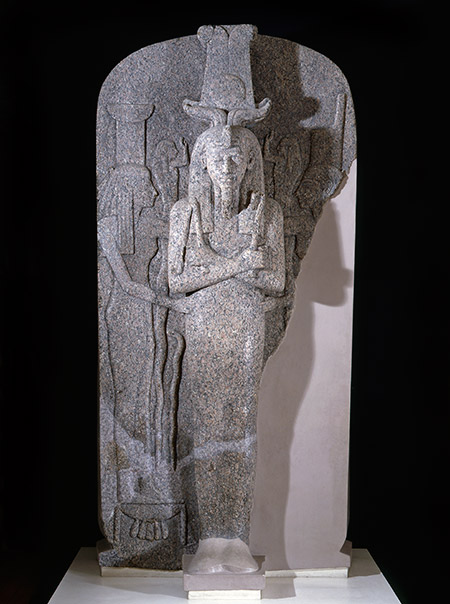Celebrating the Fitzwilliam at 200
The Fitzwilliam Museum houses an extraordinary collection and has a lustrous reputation. It also has an intriguing history.

In 1966, to mark its sesquicentenary, the Fitzwilliam Museum in Cambridge held a special exhibition of more than 100 of its own illuminated manuscripts, which were at the heart of the collection of its founder, Viscount Fitzwilliam (1745-1816). ‘It was very favourably reviewed and attracted big crowds’, notes the current keeper of antiquities, Lucilla Burn, in her well-illustrated, admirably thorough but thoroughly readable study, The Fitzwilliam Museum: A History, published for its bicentenary, along with an elegant, hand-sized guide book to the museum, lavishly illustrated with fold-out floor plans and masterpieces, which accompanies a small exhibition on the museum’s history currently on display in its Octagon. Perhaps the success of the 1966 exhibition explains why the Fitzwilliam has arranged another major manuscript exhibition for the second half of 2016, Colour: The Art and Science of Illuminated Manuscripts. This will display 150 of its manuscripts, ranging from the prayer books of European royalty and merchants to local treasures, such as the Macclesfield Psalter, and from an alchemical scroll to the ABC of a five-year-old princess.
Much has changed at the museum, and in the museum world generally, since 1966, as Burn vividly documents. Not until 1967 did the Fitzwilliam agree to lend to an exhibition abroad, whereas in 2013-14 it lent more than 120 items to over 50 venues in 12 countries. Until as late as 1969 some of its key galleries lacked electric lighting. Only in 1975 was a centre for conservation established. Only from the 1980s onwards did the museum begin a programme of outreach to children, schools and adult learners (although the Friends of the Fitzwilliam dates from 1909). In 1966, the director responsible for the manuscripts exhibition, after being criticised by the Cambridge student journal Varsity for the museum’s
falling attendance figures, defiantly responded: ‘I don’t care if an undergraduate spends three years here without setting foot in the place: what I want is a nucleus of people who take a real interest in the museum and come here often.’ No museum director today could espouse such frank elitism – for better or worse.
More trenchantly still, the Fitzwilliam’s longest-serving director (1908-37), Sir Sydney Cockerell, confided to his biographer after retirement: ‘I often wished I’d got a machine-gun mounted at the top of the stairs to mow down the people who tried to make me accept second-rate and third-rate objects.’ Yet, it is generally accepted that Cockerell was the museum’s most influential director, who rescued it from congested mediocrity and established its lustrous reputation. ‘Cockerell’s impact on the Fitzwilliam is impossible to overstate’, writes Burn. None of his successors as director has questioned the truth of Cockerell’s assertion: ‘I found it a pigsty: I turned it into a palace.’
According to Burn, persistent understaffing by Cambridge University (unlike the Ashmolean Museum at Oxford), tensions surrounding its responsibilities to Cambridge students and faculty versus the public and controversy about the place of archaeological objects in a predominantly fine art collection have recurred throughout the Fitzwilliam’s history.
Consider the story of the massive carved and inscribed granite lid of the sarcophagus of Rameses III, presented to the university by the excavator Giovanni Belzoni in 1823: the very year of the decipherment of the Egyptian hieroglyphs. In 1954, the Louvre Museum proposed to unite this lid with its box, held at the Louvre, in exchange for a stone statue of the Egyptian goddess Sekhmet. The Fitzwilliam’s honorary keeper of Egyptian antiquities supported the Louvre’s proposal, as did the Fitzwilliam’s director, partly because the lid was damaged and took up so much space. But the exchange was strongly opposed by some of the museum’s syndics (trustees) and it went nowhere. Then in 1967, under a new director, the keeper of antiquities ‘triumphantly and dramatically resolved the issue of space by standing the lid up vertically in the centre of the smaller Egyptian gallery’, notes Burn, ‘where it remains today’: testimony to the variety, quality and intriguing history of the Fitzwilliam’s undoubtedly extraordinary collections.
Andrew Robinson has written many books on the arts and sciences, most recently, Earth-Shattering Events: Earthquakes, Nations and Civilization (Thames & Hudson, 2016).




